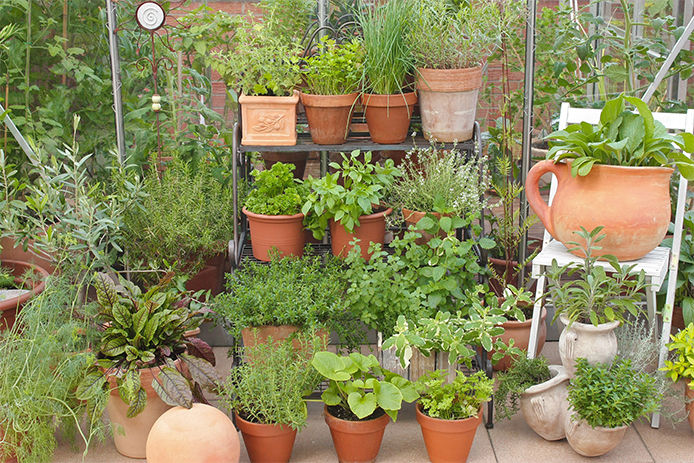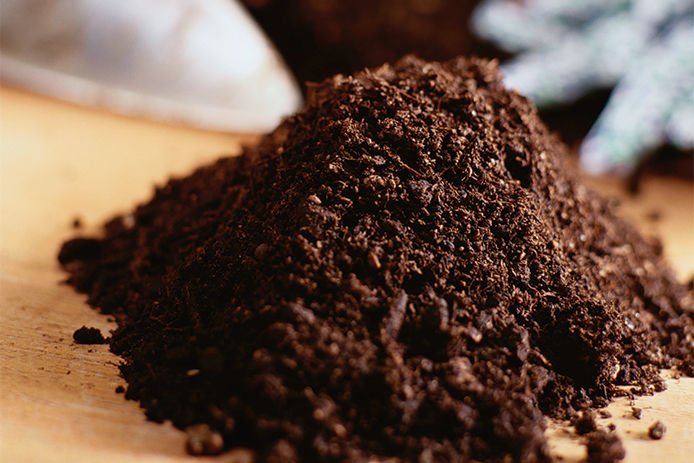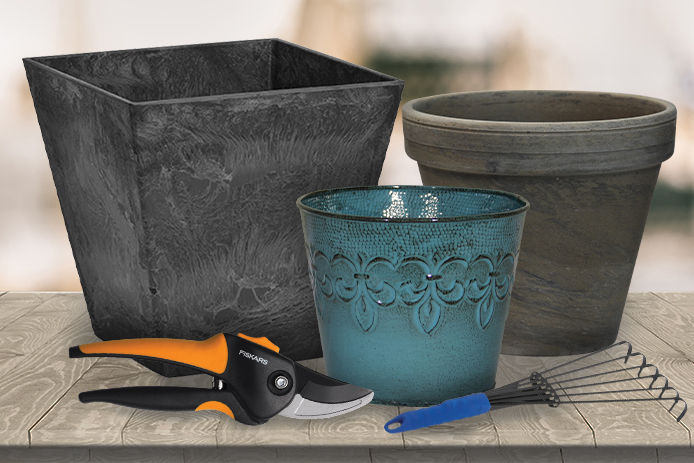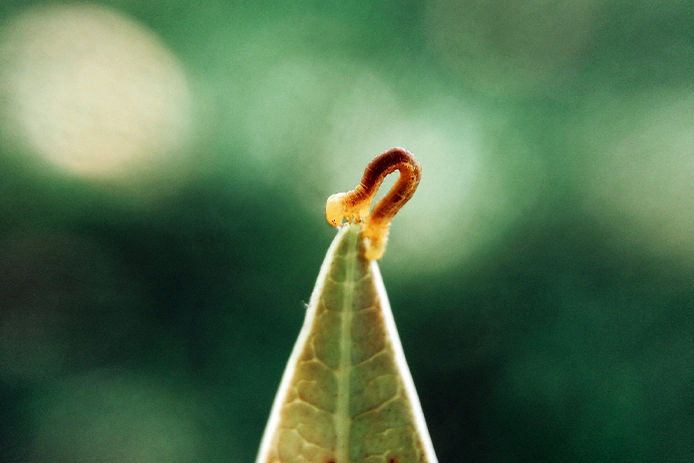Remember, an indoor herb garden can be fun, but it’s still a process getting there. Make sure you have essential tools and pick a few herbs you think you’d benefit from. With the right indoor atmosphere, anything can be possible if you get into a routine for care and maintenance.
How to Grow Herbs Indoors

Starting an indoor herb garden can be hard work, but also rewarding and exciting. Even if you’re not a nature lover, you can still grow your own edible pantry in no time. There are certain tools you’ll need, as well as plenty of space in your home to get started.
1. Natural Light or Grow Lights

For all plants and herbs, natural light is best as well as south facing windows. This way the indoor herb area has the brightest light and the most hours during the day. If you don’t have enough windows consider purchasing full-spectrum grow lights that can be left on for several hours a day.
2. Shelving and Storage

You can purchase special shelving units, find bookshelves from a thrift store, or tall carts on wheels to house your garden. An A-Framed plant stand is great for indoor and outdoor gardens alike. Also, consider galvanized shelf liners which help collect water runoff.
3. Soil for the Herbs

Winter temperatures can be detrimental to herbs which is why they thrive well in an indoor atmosphere. Most herbals can thrive with loose organic soil mixture that is quick to drain. You can also blend regular potting soil with some cactus mix for extra drainage. Keep the soil slightly moist at all times and fertilize with a house plant-based fertilizer at least once a month.
- Organic soil bags
- Cactus mix
- Liquid house plant fertilizer
4. Tools Needed for Your Garden

There are only a few hand tools you will need. This is a basic beginner list, but even the pros use them. Aside from your plants and containers, you’ll want to have a watering can, pruners, heavy duty scissors, mini hand rake, and shovel.
Watering Can and Pots/Containers
Water plants at soil level so roots are getting fed. Be careful to not water leaves as mildew can form easily. It's also best to have a variety of containers or pot sizes for different herbs.
Pruners and Heavy-duty Scissors
You will need pruners or heavy-duty scissors when maintaining an herb garden. Pruning dead areas or clipping fresh herbs is going to be a regular thing once they start to grow. You want a quality, medium grade pair of pruners (we recommend Fiskars) to make choice clips. Refrain from plucking or pulling plants so you don’t cause damage.
Hand Rake and Shovel
Great for removing debris such as dead leaves, as well as other types of plant debris. Whether you’re starting from seedlings or buying plants already started, hand shovels are an essential tool to own. Look for shovels and rakes with ergonomic features, these will help make the process easier.
5. Seeds or Starter Plants

It’s probably best to start with both, that way, if some don’t thrive as seedlings you will at least have some herbs to use. If you’re up for the task, build your garden from the ground up! Most herbs can be purchased in store like oregano, thyme, chives, and mint. Some herbs are perfect as clippings and can thrive right away in a glass of water.
6. Pests and Indoor Herbals

If you are transplanting plants from an outdoor garden, check for droppings or webbings. Always wash off plants ever so slightly with soapy water. Keep the area clean, with plenty of airflow and maintain space between pots or containers.
7. Essential Herbs and Their Benefits

Mint
Mint is great for specialty drinks. It’s a nice garnish on lamb chops and other meats and used in baking. It thrives in shady spots. It can also help soothe the stomach, similar to sarsaparilla root.
Chives
Chives are a great topping for almost any dish and the flavor appeals to many. It primarily thrives outside, but can tolerate amounts of shade. To grow indoors, you will want to make sure you have several hours of sunlight or get a specialty light. It can also boost the immune system.
Parsley
Parsley grows well in the shade. Keep soil very moist. It can help prevent urinary and kidney infections and aid in intestinal health. It’s a great detox herb.
Dill
The dill flavor is very pungent and is awesome on vegetables, pastas, meats, potatoes, sandwiches, dips, and so much more! It has a variety of health benefits for the body, including anti-inflammatory and antiviral properties, it assists in lowering cholesterol, and can help improve depression. It’s also a bug repellant.
Cilantro
Cilantro grows wonderfully in the shade. It can grow well from a seedling, but it’s not a good one to transplant. You can enjoy it on potatoes and rice, it's also good with other vegetables and dips too. It also has a variety of vitamins, minerals, and antioxidants. It can assist with detox from heavy metals. It supports heart health and can balance sugar levels.
Oregano
It’s very common for oregano to be part of Italian dishes, such as pastas or cheese breads. It needs some sunshine but can thrive in partial shade as well. It has great anti-inflammatory/antibacterial benefits and is definitely something you should grow in your indoor herb garden.
Thyme
Thyme can be grown in your indoor herb garden. The soil should not be overly wet, and can actually benefit from being partially dry. This herb assists with stomach issues, sore throats, and arthritis.
Lemon Balm
Lemon balm should also be planted in your indoor herb garden. It has a fresh minty citrus lemon smell that can be used in a variety of teas, salads, and dressings for fish and chicken meals. It can help with PTSD, anxiety, and depression. It’s also wonderful for G.I. issues involving the liver and bile and helps with insomnia.
Lavender
Lavender is a pleasant purple herb with a pungent floral smell. It has been in the aromatherapy category for years and helps relieve stress. It has antiseptic and anti-inflammatory properties and can help bug bites and heal burns.
Sweet Woodruff
Sweet woodruff can be prolific outdoors or in shady indoor areas. It’s fragrant with star-shaped white leaves. It has been used for preventing stomach, liver, gallbladder, lung, and urinary infections.
Anise
Anise has a licorice smell and flavor. It produces oil and is used for a cough and great for the flu. It improves digestion, menstrual cramps, and nausea.